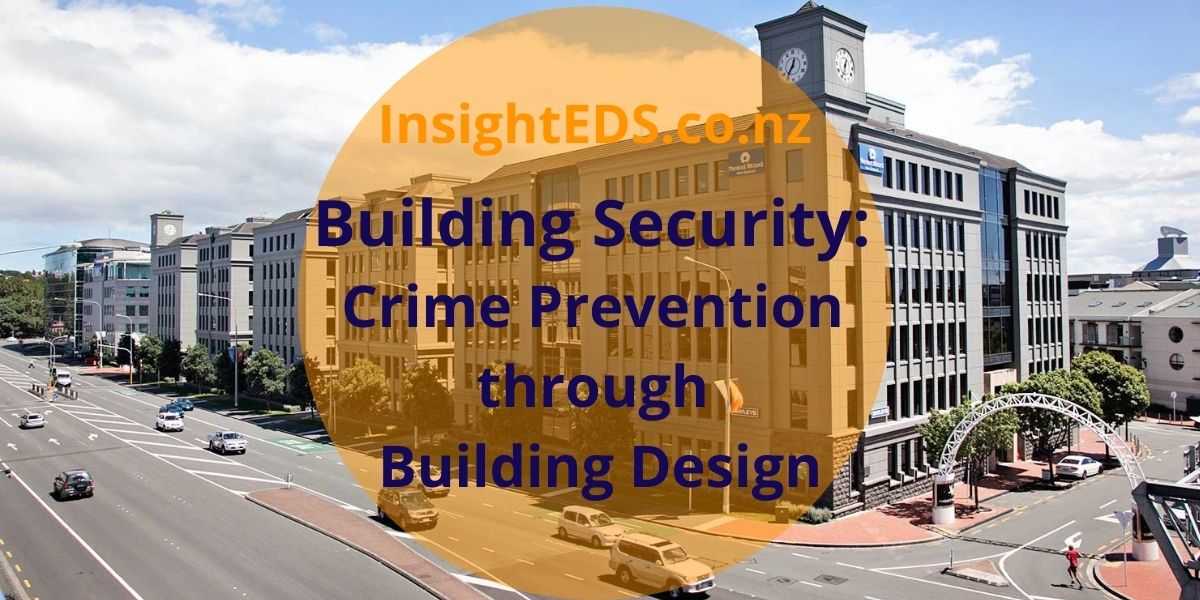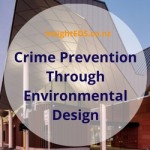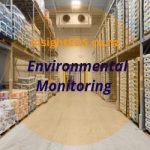
Crime Prevention Through Environmental Design (CPTED) is a set of design principles used to discourage crime.
The concept is simple: buildings and properties are designed to prevent damage from natural forces and disasters, and they should also be designed to prevent crime.
“CPTED reduces criminal opportunity and fosters positive social interaction among legitimate users of space. The emphasis is on prevention rather than apprehension and punishment.” (NZ Ministry of Justice)
Below is a summary of the four main CPTED principles.
Make sure you keep these in mind when assessing your building security.
1 Building Security: Natural Surveillance
Criminals thrive on anonymity. They do not like to be seen or recognised, so they will normally choose situations where they can hide and easily escape.
Natural surveillance then, is simply arranging your property for maximum visibility.
Natural Surveillance Checklist:
- Windows signs should cover no more than 10% of the window surface
- Interior of the space should be visible from the sidewalk or street
- Exterior parking lots should be well lit
- Exterior parking lots should be visible from inside the space
- Street and/or sidewalk should be visible from inside the space
- All entrances should be visible from within the space
- Non-working surveillance cameras should be repaired or removed
- Interior lighting should remain on at night
- Ensure trees and bushes are kept away from building or maintained at a low height
2 Building Security: Territorial Reinforcement
The purpose of Territorial Reinforcement is to create a clear distinction between public and private property.
This is important for two reasons: legitimate occupants have a sense of ownership and will notice people who don’t belong; intruders, on the other hand, will have a hard time blending in.
Territorial Reinforcement Checklist:
- Property lines should be well marked by fences, shrubbery, short walls or similar means
- Receptionist/cash register/or greeter should be positioned to screen all people entering the space
3 Building Security: Natural Access Control
Criminals like to feel that they are in control as they enter and exit an area.
When they are in control, they have a low perception of risk, since they believe they are able to move about unnoticed.
However, this sense of control can be denied by limiting and clearly marking the approaches to buildings and properties, thereby channeling visitors into a defined area.
Natural Access Control is the use of building and landscaping features to guide people as they enter and exit a space.
Natural Access Control Checklist:
- Walkways, landscaping and driveways should lead visitors to a controlled entrance
- Access to the roof should be secured
- Exterior door hinges should not be accessible from outside
- Exterior doors should be locked with deadbolts
- Deadbolts should have a minimum 1″ throw and the strike plates should be anchored to the door frame
- All keys should be accounted for
- If keys cannot be accounted for, locks should be re-keyed and a key control policy instituted
- Windows should be locked
- Access to ladders should be secured
4 Building Security: Maintenance
Surprising as it may seem, many experts believe that a well maintained property can deter crime.
Why? Because a poorly maintained building demonstrates that its owner is no longer able or willing to control his property. It thus becomes an invitation to any criminal who wants to seize control.
Maintenance Checklist:
- Graffitti should be removed or painted over
- Weeds should be removed
- Debris should be removed from the grounds
- All lighted signs should be in working order
- All light fixtures should be in working order
- Broken windows should be fixed as soon as possible







